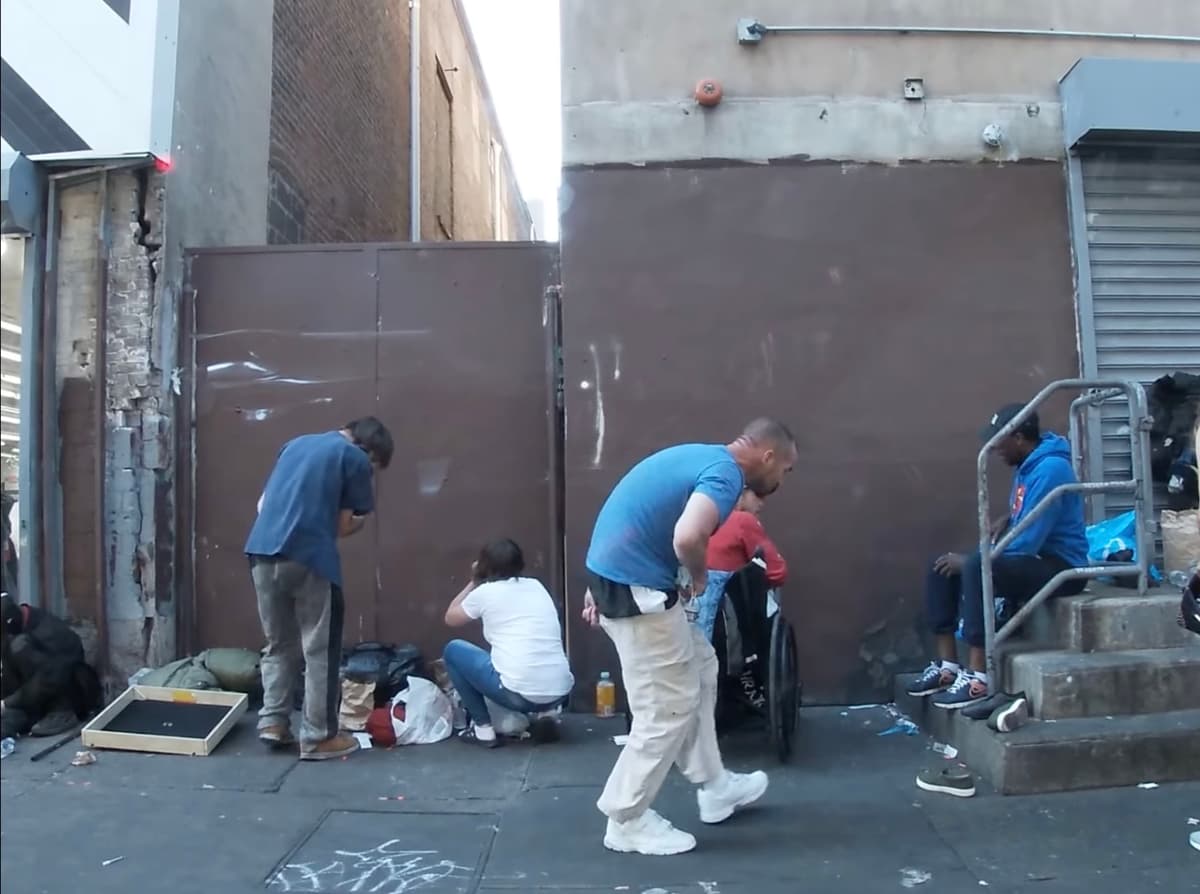TikTokers Filming ‘Zombieland’ Videos of Drug Addicts on Skid Row Sparks Social Media Craze
As xylazine — which the federal government considers the ‘deadliest drug threat our country has ever faced’ — sweeps the country, ethical questions about filming ‘Zombieland’ videos grow more urgent.

A shocking genre of cell phone videos, captured at Philadelphia’s Kensington Avenue, are proliferating on social media. The videos showing images of drug-addicted persons are so gruesome that they are tagged as #zombieapocalypse.
Are the videos, seen by millions of TikTok and YouTube users, a horrifying form of exploitation and voyeurism? Or are they the cutting edge of a new form of citizen journalism shedding light on failed public policies?
The videos, depicting individuals addicted to xylazine and living in an epicenter of the nation’s opioid crisis, are sparking conversation on an undercovered issue. Yet some warn that the images, often taken without consent, dehumanize and exploit those who are suffering for social media clout.
As xylazine — which the federal government now considers the “deadliest drug threat our country has ever faced” — sweeps the country, ethical questions about filming “Zombieland” videos will grow more urgent.
“YouTubers and TikTokers — they aren’t journalists, they aren’t doing any investigative work — they’re using stigmatizing language, they’re interviewing people who are heavily intoxicated and cannot give their consent, they’re asking traumatizing questions, and they’re monetizing it and leaving, without giving so much as a bottle of water to a human,” Savage Sisters founder Sarah Laurel tells The New York Sun.
Savage Sisters, a Philadelphia nonprofit focusing on substance abuse, is investigating video makers who, they believe, exploit people who are suffering from addiction rather than helping find resources or solutions. While for now many of the videos center on Philadelphia, Ms. Laurel said the issue is likely to spread to other communities.
Xylazine is a non-opioid animal tranquilizer that can cause skin rotting and eventual amputation in humans, leading to its “zombie drug” nickname. In many instances, it is mixed with other illicit drugs without the user’s knowledge.
TikTok videos display people under the effects of xylazine, often showing close ups of individuals in a hunched-over position, appearing to be unaware that they are being filmed. Many of the videos play theme music from “The Walking Dead” and zoom in on people’s faces or other body parts.
Yet other films appear more educational, with interviews and explanations of the drug crisis. People depicted in the videos often suffer from other mental and physical health issues in addition to addiction, a clinical psychologist who grew up in Kensington, Geri-Lynn Utter, tells the Sun. Many of them are not originally from the district, but from neighboring suburbs and states, and go to Kensington after becoming addicted to pills.
“You learn very quickly that you can get whatever you want down there, whether it’s xylazine, whether it’s fentanyl, whether it’s benzodiazepines, whether it’s crack, whether it’s coke. So a lot of people get ‘stuck’ and I’m saying that in quotes, because everything they could ever want is down there,” Ms. Utter said.
The YouTube and TikTok filmers are often males who ask females to come into their vehicles for an interview, Ms. Utter said, and they ask women questions about their drug history and trauma.
There is a big difference between filming someone suffering in the streets and interviewing someone in the area who is sober and able to give consent, the Commonwealth Foundation’s executive vice president, Jennifer Stefano, a native Philadelphian, tells the Sun.
Referring to those suffering from drug addiction as zombies is “abhorrent and undermines human dignity,” Ms. Stefano said. While she finds the methods many TikTok filmers use to be “shameful” or done with “evil intent,” they have a First Amendment right to film in Kensington, Ms. Stefano says, and she says that she does not believe the trend calls for a government solution.
There are also times when documenting suffering can shed light on issues that may otherwise go unseen, Ms. Stefano noted. “An example of this comes from the turn of the twentieth century when journalists and authors chronicled the abhorrent conditions of the working poor in the East End of London,” Ms. Stefano tells the Sun. “Jack London’s real world chronicles of ‘The People of the Abyss’ and Charles Dickens’ fictious literature brought the conditions of the East End’s working poor to the people in power who could improve conditions.”
As the White House prepares to fight the “emerging threat” of xylazine, it is likely that more questions will arise over the ethics of documenting victims.

